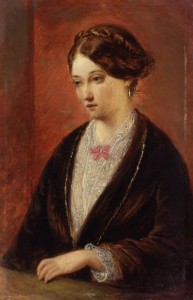Florence Nightingale is best known for her contributions to medicine and nursing: the pledge taking by newly qualified nurses was named for her, and her nickname “Lady with the Lamp” conjures images of a gentle, compassionate carer for the sick and wounded even today.
Born in May of 1820, Florence felt from a very young age that she was being called to something greater, though she didn’t yet know what that was. Very academically oriented, she had a talent for mathematics, though it was ultimately her deep faith and sense of duty toward the poor that led her to nursing. At that time, however, nursing was considered an unsuitable career for a woman of wealth and education, and her parents discouraged her. She persisted, however, and eventually was able to go to Germany to study nursing.
In 1854, the Minister of War asked Florence to oversee the nursing of the wounded during the Crimean War, so she and 38 nurses went to Turkey to oversee the distribution of food, blankets, medical supplies, and general care and cleanliness of the hospitals. It was at this point she earned her nickname, “Lady with the Lamp,” and the image of nursing in Britain was forever changed.
Beyond her contributions to nursing training, Florence was also a talented mathematician, and as a statistician, she worked toward medical reform. She believed the death toll in the Crimean War was so high not from injuries, but due to disease, poor nutrition, and a lack of supplies. She was able to show that ten times the soldiers died from illnesses (including typhus and typhoid, cholera and dysentery) than from injuries incurred in battle. She continued using statistics to fight for reform within the UK as well, and has been credited with popularizing the use of the pie chart for depicting data. Though visual depictions of data are common today, her use of visual representation was pioneering. She is also credited with creating a form of the pie chart called the polar area diagram. She was honored for her work in statistics, becoming he first female elected to the Royal Statistical Society, and she was also an honorary member of the American Statistical Association. Though best remembered for her contributions to nursing, she made equally great contributions to statistics.

